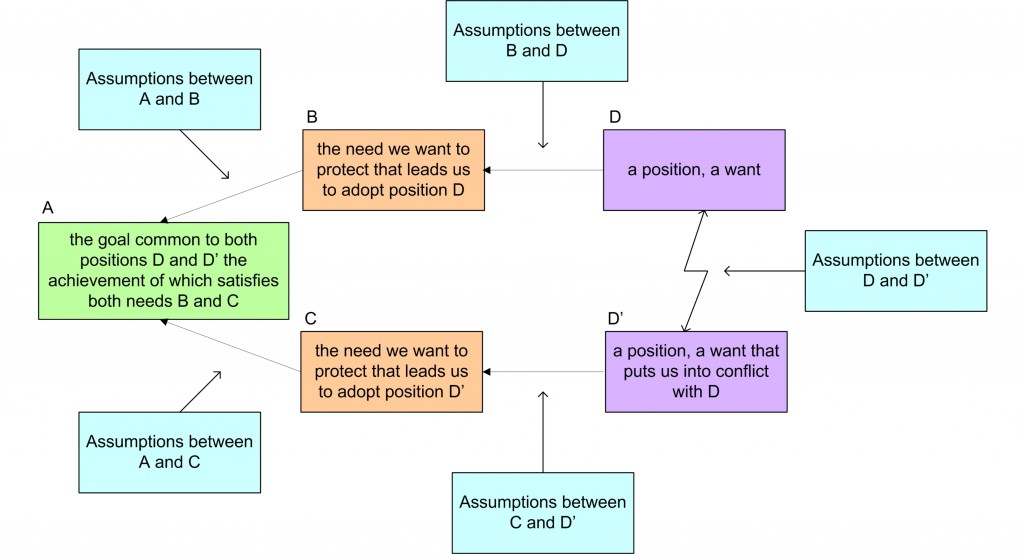 How do we create a breakthrough when our need for control and our need for vision drive us into a core conflict? Dr. Domenico Lepore, international expert in systemic management, continues his series on the Thinking Process Tools from the Theory of Constraints.
How do we create a breakthrough when our need for control and our need for vision drive us into a core conflict? Dr. Domenico Lepore, international expert in systemic management, continues his series on the Thinking Process Tools from the Theory of Constraints.
Since our childhood we have been immersed in a field of forces that shapes the two basic needs that all of us have; the need for control (over ourselves) and the need for vision (of ourselves).
These two needs reflect the dual nature that only humans have of physical and spiritual being. While the spiritual, transcendent part of ourselves knows no boundaries and aims high, the physical part knows and undergoes fears. Invariably, the simultaneous satisfaction of these two needs will prompt us into a situation of conflict. This time though, the conflict will not be between two people wanting different things and neither will it be a dilemma between two equally desirable wants. The conflict originated by these two needs, for individuals as well as for organizations, will be between something that we strongly desire (and we do not seem to be able to access) and a highly undesirable situation that is the result of how our fears force us to cope with the need for control. This kind of conflict is called “core conflict cloud”.
Building the Core Conflict Cloud
The exercise of building a Core Conflict Cloud for an organization is invaluable and the process can be exhilarating. In the last 15 years I have worked with hundreds of top and middle managers to build custom made implementations of the Decalogue and the starting point has always been the writing of the Core Conflict.
The conventional way of building a Core Conflict Cloud is to start from the elements of our reality that we perceive as undesirable; historically they are named Undesirable Effects (UDEs). If we go down this route, then the procedure is the following:
- We collect all the Undesirable Effects (UDEs)
- We find a verbalization that summarizes them all, we call it D. (We may want to do this in steps: a) we stratify the UDEs in homogeneous categories; b) we summarize each category with one statement; c) we consolidate these statements into one);
- We find a verbalization that summarizes all the Desirable Effects (DEs), we would like to experience, we call it D’:
- We state the need for “control” that forces us to accept, to cope with D; we call it B:
- We state the need for “vision” that prompts us to say that D’ is the reality we would like to live in; we call it C
- We verbalize the most basic goal whose achievement must pass through the simultaneous satisfaction of B and C; we call it A. In other words, B and C must be simultaneously satisfied in order to achieve A.

The Core Conflict Cloud
Getting to Breakthrough
When we build the Core Conflict with an organization, a group of managers sits for two or three days in a room starting with a “bitching and moaning” session where all the Undesirable Effects (UDEs) of the organization are verbalized. This first phase is a very “feel good” one, everybody agrees that the company is plagued by these effects. These effects are and feel “real” and everybody would like to get rid of them.
Summarizing all the UDEs in one single statement is normally a little cumbersome but it is generally done in few hours. At this point, the procedure from points 1 to 6 that I listed above begins and the end result is normally welcomed as a breakthrough. What happened?
We’ll look at that further in out next post.
See also:
Our Training Sessions to learn these Tools.
Our book: Sechel: Logic, Language and Tools to Manage any Organization as a Network
Separating Wants from Needs: Tools for Thinking Systemically
Connection and Transformation with the Conflict Cloud Tool
Thinking Process Tools for Managing Systemically
Change: Tools for Thinking, Planning and Enacting Change





Leave a Reply